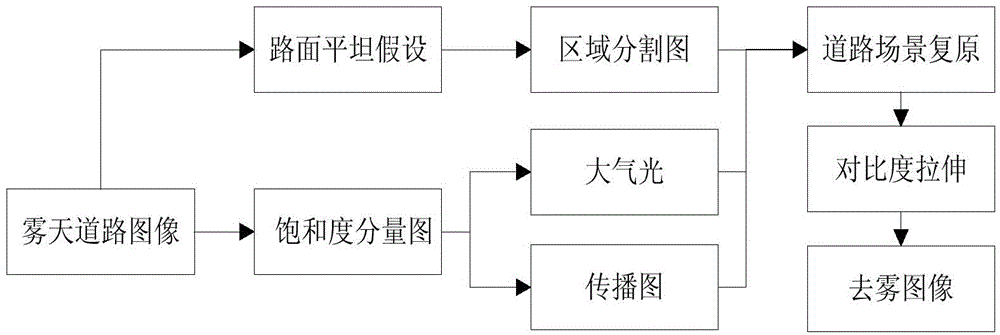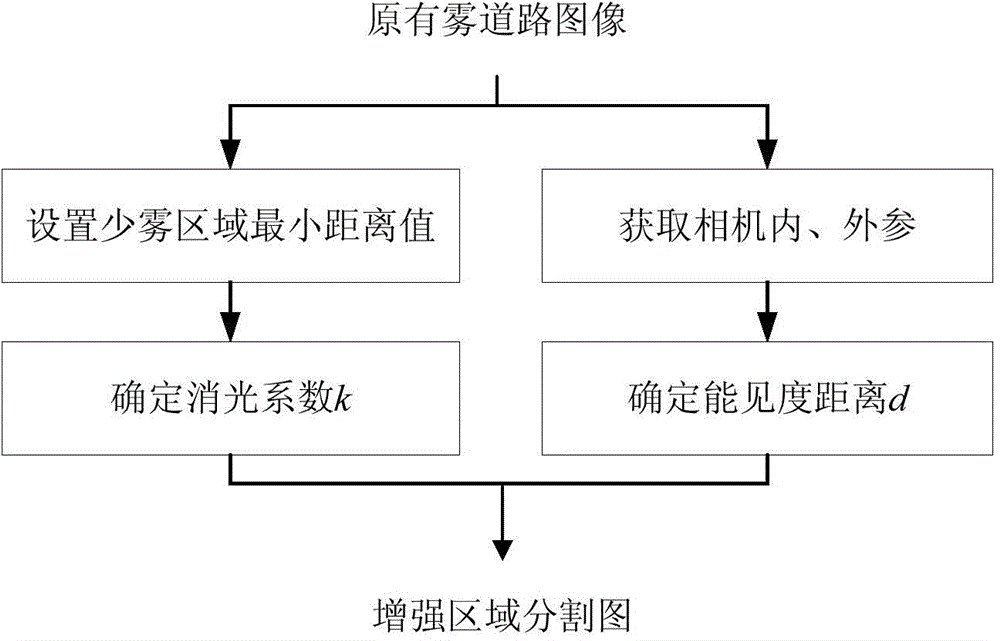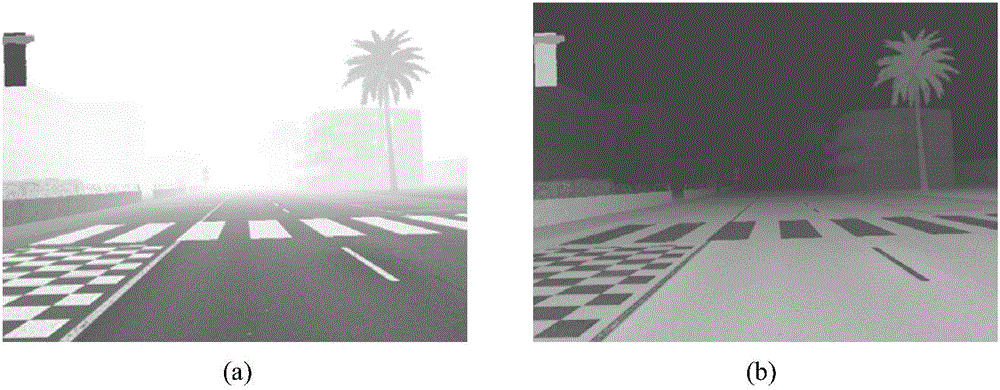Rapid defogging method for road image
An image and road technology, which is applied in the field of rapid defog for road images, and can solve problems such as the defog effect is unfavorable for safe driving of vehicles
- Summary
- Abstract
- Description
- Claims
- Application Information
AI Technical Summary
Problems solved by technology
Method used
Image
Examples
Embodiment 1
[0061] This embodiment is aimed at virtual fog road image Figure 4 (a) (size 640×480), according to figure 1 As shown, the defogging process is carried out in the following three steps:
[0062] 1. Calculate the atmospheric light value and propagation map through the saturation component of the original foggy road image;
[0063] The specific steps to implement this process include:
[0064] First, convert this virtual foggy road image from RGB color space to HSV color space, and extract its saturation component image.
[0065] Then, use the saturation component to obtain the dark primary color image D(I) of the original fog image. On this basis, the dark primary color image is arranged in descending order, and the positions of the points whose value is the first 1% in the dark primary color image are determined, and these positions correspond to the maximum pixel value in the original fog image area , which is the atmospheric light value A. The value of A in this exampl...
Embodiment 2
[0086] For actual foggy road images Figure 5 (a) (size is 800×600) for defogging. will first Figure 5 (a) Transform from RGB space to HSV space, and then obtain the dark primary color image of the original foggy image through the extracted saturation component. On this basis, obtain the atmospheric light A and the propagation map t. A value in the present embodiment is 0.9137.
[0087] Then, use formula (2) to obtain the enhanced region segmentation map of the original foggy road image, where d min = 40, v h =210, σ=2610. Substitute this region segmentation map into formula (5) to obtain the restored image R, where the image adjustment factor w=0.6028.
[0088] Finally, use formula (6) to perform adaptive contrast stretching on the restored image to obtain the final dehazed road image Rf. where the two parameters of the formula V low and V high The values were found to be 77 and 201, respectively.
Embodiment 3
[0090] For actual foggy road images Figure 6 (a) (size is 400×300) for dehazing treatment. will first Figure 6 (a) Transform from RGB space to HSV space, and then obtain the dark primary color image of the original foggy image through the extracted saturation component. On this basis, obtain the atmospheric light A and the propagation map t. The value of A in this embodiment is 1.
[0091] Then, use formula (2) to obtain the enhanced region segmentation map of the original foggy road image, where d min = 40, v h =105, σ=2610. Substitute this region segmentation map into formula (5) to obtain the restored image R, where the image adjustment factor w=0.6730.
[0092] Finally, use formula (6) to perform adaptive contrast stretching on the restored image to obtain the final dehazed road image Rf. where the two parameters of the formula V low and V high The values were found to be 23 and 216, respectively.
[0093] Figure 4 , Figure 5 and Figure 6 It shows the c...
PUM
 Login to View More
Login to View More Abstract
Description
Claims
Application Information
 Login to View More
Login to View More - R&D
- Intellectual Property
- Life Sciences
- Materials
- Tech Scout
- Unparalleled Data Quality
- Higher Quality Content
- 60% Fewer Hallucinations
Browse by: Latest US Patents, China's latest patents, Technical Efficacy Thesaurus, Application Domain, Technology Topic, Popular Technical Reports.
© 2025 PatSnap. All rights reserved.Legal|Privacy policy|Modern Slavery Act Transparency Statement|Sitemap|About US| Contact US: help@patsnap.com



